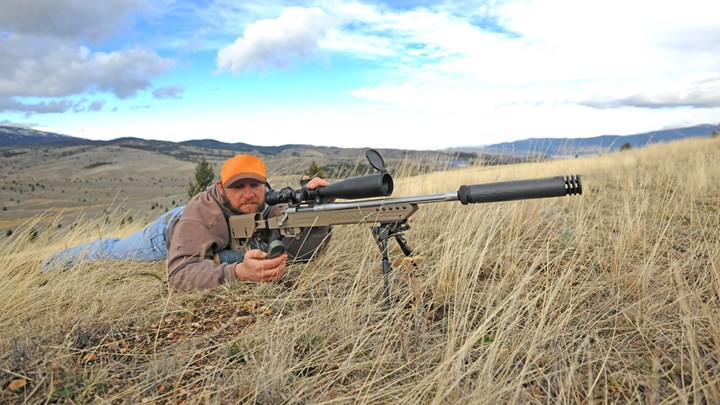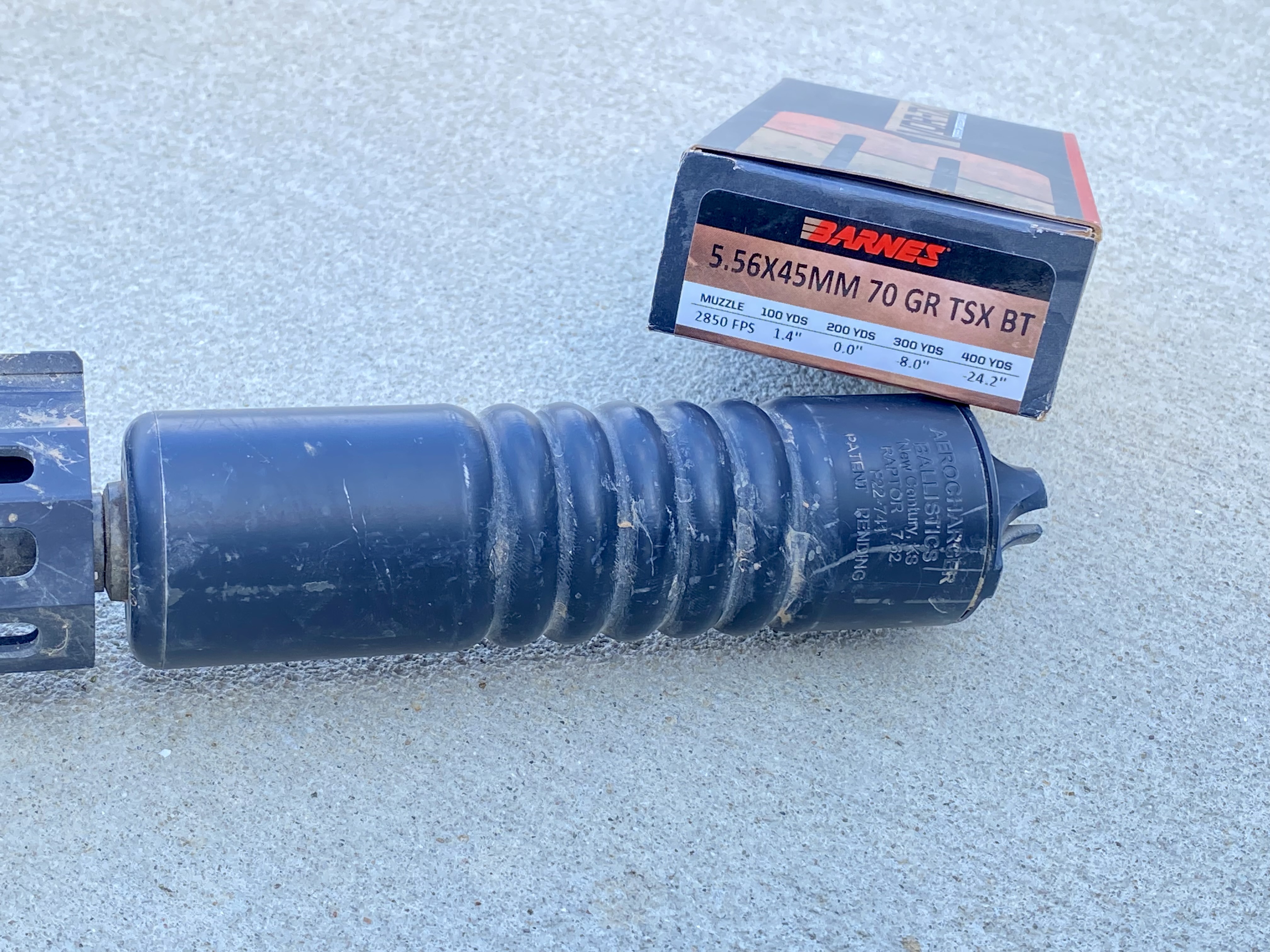
by Brian McCombie - Tuesday, March 12, 2024

The four of us crept down toward the feeder at the end of the pasture, the Texas moon overhead shining brightly. We got to within 100 yards of the feeder. No hogs. Yet. But every previous night that week, our guide assured us, hogs were here.
Not 15 minutes later, a group of wild hogs eased out of the tree line and made for the feeder.
Three of us had rifles, our fourth man used a handheld thermal to spot. We spread out in a line, waited for the hogs to start eating and got our targets lined up in our thermal scopes. We did the “1-2-3” countdown and opened fire.
At which point, the hogs did what hogs always do in this situation: scattered like maniacs in numerous directions, minus the three that hit the ground.
“One on the right—I’m on him!” one shooter yelled.
“Big one running straight away!” I yelled. “He’s mine!”
Did I mention all three of us shooters were using suppressed rifles? We were. Mounted on the end of my AR-15 was a Raptor 7.62 suppressor made by AB Suppressors of New Century, Kan.

That September 2023 night hunt proved to me, yet again, that using suppressors while hunting is the way to go. Not only was our hearing protected, thanks to the suppression of otherwise ear-damaging noise. We were able to effectively communicate after those very first shots, when the hogs were dashing about frantically, and we were picking out our now-running targets.
Plus, the hogs themselves were not really sure from which direction the shots were coming. A pair ran circles in front of us, obviously confused, while one sow made the big mistake and came right at us. We dropped six hogs during that sequence, and I suspect the number would’ve been half that had we been hunting with unsuppressed rifles.
Many Benefits
Currently, suppressors are legal to own and use in 42 states, according to American Suppressor Association(ASA). Unfortunately, ASA also notes that between 70 to 80 percent of all hunters do not use hearing protection of any kind when afield.
That’s very concerning when you consider that an unsuppressed gunshot ranges from 140 to 185 decibels (dB), and exposure to a single shot can cause permanent hearing damage. According to the Centers for Disease Control, any noises over 120 dB “can cause immediate harm to your ears.”
A quality suppressor can reduce that level of noise by trapping and dissipating blast pressure and gases at the muzzle. Suppressors reduce the noise of a gunshot by an average of 20 to35 dB—roughly the same amount as ear plugs or muffs—preserving the hearing of recreational shooters, hunters and hunting dogs.
Other Advantages
As the NRA Institute for Legislative Action shares, in addition to safeguarding our hearing, suppressors can improve:
Trends and Options
Since 2005, Silencer Central has been serving this country’s hunters and recreational shooters by selling a wide selection of suppressors. The company also provides its customers with the easiest process possible for those purchases. In the 42 states where suppressors are legal, for example, Silencer Central can even deliver the approved suppressor right to the customer.
Suppressors are regulated under the National Firearms Act (NFA) of 1934 and fall under the administrative control of the Bureau of Alcohol, Tobacco, Firearms and Explosives (ATF). In order to buy a suppressor, a person must send ATF an application including fingerprints, passport photos and a $200 transfer tax, as well as notify the local chief law enforcement officer.
Then, a person has to wait for ATF to process and approve the application.
According to Brandon Maddox, founder and CEO of Silencer Central, one very positive trend in the suppressor buying process is a reduction of wait times for ATF approval.
“Last year, in January 2023, it was close to 12 months for an individual to receive ATF approval for a suppressor purchase,” Maddox told the NRA HLF. “Now, that’s down to an average wait time of seven to eight months.”
Maddox credited ATF’s new e-filing system for suppressor applications with the reduction in wait times. Another trend Maddox noted was that more and more lever-action rifle owners were now using suppressors. In part, this is because lever action manufacturers are now routinely offering rifles with threaded barrels ready for the addition of a suppressor.
Also, Maddox said, Silencer Central recognized that there were many lever-action owners (and other owners of long guns) who had older models without threaded barrels. So, Silencer Central now offers professional barrel threading, for a fee, and currently threads some 5,000 barrels annually.
Really, there’s very little reason for hunters to not avail themselves of suppressors nowadays. The process is easier than it’s ever been to purchase a suppressor, and the benefits to the hunter and recreational shooter are many and obvious.
About the Author
Brian McCombie is a field editor for the NRA’s American Hunter and writes about firearms and gear for the NRA’s Shooting Illustrated. A member of the National Rifle Association and the National Shooting Sports Foundation, Brian enjoys hunting hogs, shooting 1911s, watching the Chicago Bears and relaxing with his two cats.
E-mail your comments/questions about this site to:
[email protected]
